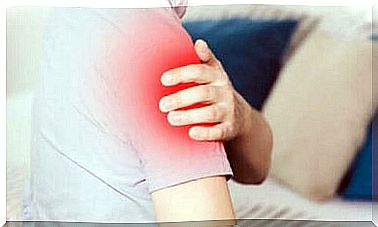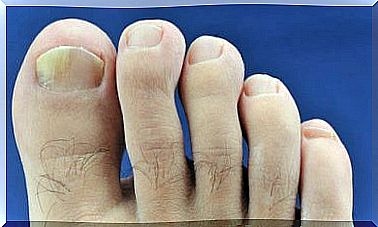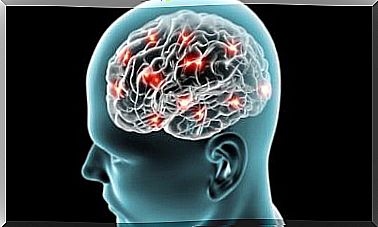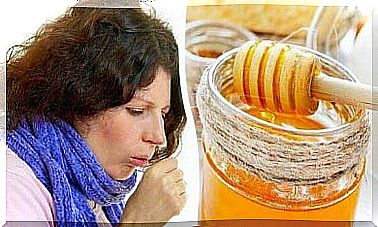Controlled Breathing: Characteristics And How To Practice It

Controlled breathing brings the breathing processes into our conscious sphere and allows us to observe their characteristics: rhythm, cadence and depth. It is possible to train yourself to know how to carry it out and modify it in order to reach your goals.
Breathing is usually an automatic act that the brain controls and modulates through the brain stem without our conscious intervention. It is influenced by many factors in our emotional and psychological sphere. Furthermore, it is a source of information for our endocrine system regarding the stress hormones secreted in the adrenal glands.
Certainly, the characteristics of controlled breathing bring us multiple benefits, some of an immediate nature. Before explaining how to practice it, let’s briefly review the respiratory processes.

Physiology of breathing
The function of the respiratory system is twofold. On the one hand, it must convey inspired air to the pulmonary alveoli, where oxygen will pass into the blood and, in turn, will collect carbon dioxide or CO 2, the product of cellular metabolism, to evacuate it to the outside through the expiration.
This mechanism allows cells to convert carbohydrates, fats and proteins into energy for proper functioning.
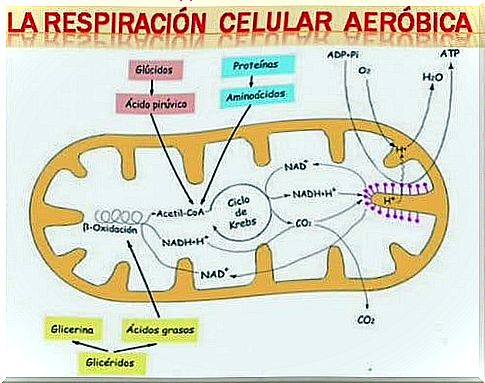
Subsystems of the respiratory process
- Conduction system: formed by the nose, nasopharynx, larynx, trachea, main bronchi, secondary bronchi and terminal bronchioles. It is the area through which the passage of air to the lungs is checked.
- Respiratory system: it consists of the alveolar sacs, the alveolar membrane and the arterial and venous capillaries. In this area, gas exchanges are performed, collecting CO 2 from the arterial capillaries and supplying O 2 to the venous capillaries.
- Muscular system: refers to the muscles involved in breathing. The most important is the diaphragm, although the intercostal and clavicular muscles also interfere to a lesser degree.
The circulatory mechanism respiration requires the blood containing carbon dioxide CO 2 to reach the pulmonary capillaries and which can be released in the alveolar sacs. The greater the blood flow, the greater the gas exchange.
As circulation starts in the right ventricle, which is less muscular and powerful compared to the left, most of the blood flow is directed to the base of the lungs, which, paradoxically, is the area that we least ventilate and with which we breathe the worst.
Breath Types
Considering the location of breathing, we can divide it into abdominal or diaphragmatic, thoracic and clavicular.
Abdominal or diaphragmatic breathing
In this type of breathing, the diaphragm descends, leaving room for the bases of the lungs to expand their capacity. It is the most effective breath and the least used.
chest breathing
In chest breathing, the rib cage exerts a brake, marks a limit for the central expansion of the lungs, and is therefore not as effective as the abdominal.
clavicular breathing
It’s the least effective. We can say that it is a residual breath because it covers the smallest area of the lungs and its expansion mechanism is very limited.

Controlled breathing allows full use of all types of breathing. Its functionality is based on abdominal breathing, makes maximum use of thoracic breathing capacity and does not neglect clavicular breathing, despite its little influence on the respiratory process.
Next, we will detail what controlled breathing consists of, its characteristics and how to practice it.
Characteristics of controlled breathing
Controlled breathing allows us to be aware that we are breathing, which is the basis of how to do it. Therefore, we can vary their characteristics and train them. We become aware of the breathing process and influence its cadence, rhythm and depth, adapting it to our greatest benefit.
In controlled breathing , we perform between 8 and 12 breaths per minute. It is a calm breathing that allows the distribution of air throughout the lung and facilitates gas exchange through capillaries.
In addition to these benefits, it affects and modulates stress activation mechanisms through the endocrine system and the sympathetic nervous system.
Unconsciously, the mind associates rapid, shallow breathing with a risk that threatens the person and thus triggers stress mechanisms through the release of cortisol from the adrenal glands.
Fast, shallow breathing is what we see in people who are experiencing extremely serious illness. This has been called “intensive care unit breathing”. This type of shallow and rapid breathing acidifies the internal environment and has negative consequences at the physical and brain level, making the prognosis of patients difficult.
When we establish controlled breathing, we can vary the pattern of frequency and depth, moving to a moderately deep and slow breathing that is interpreted by our subconscious as a state of calm and peace.

With moderately deep and slow breathing, endocrine processes are triggered that remove stress hormones (mainly cortisol and adrenaline) and stimulate the production of endorphins and the so-called ‘happiness hormones’: dopamine and serotonin.
How to perform controlled breathing
In the beginning, to properly perform controlled breathing, we will need to put all our conscious attention. With practice, this will become a habit and you will only become aware in times of stress, anxiety, fear, etc.
Technique to perform controlled breathing
Position
- Sit comfortably with your eyes closed.
- Place your right palm on your abdomen and your left palm on your chest.
- If the posture is uncomfortable, you can do the exercise while standing or lying down.
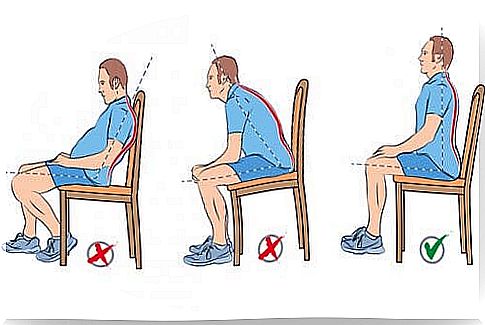
Breathing
- Breathe in and out through your nose. If there is any difficulty, this can be done by mouth, but it is less advisable.
- Take a deep breath, trying to direct the air into the abdomen. Notice how it rises with the in-breath and falls with the out-breath. Note that the right hand will move rhythmically as the air moves in and out.
- Breathe in while counting to 3 and exhale to 3 as well. At first this requires all your attention and may seem difficult, but little by little it will get easier.
- Hold air for 1 second after inhaling, then exhale.
It’s a good idea to adapt your breathing rhythm so that it is comfortable, slower or faster, depending on your sense of well-being.
After a while, you can do variations: doing the same exercises while standing, without activity or doing something, in bed before going to sleep or right after waking up.
Obviously, when we have a certain skill, we can increase the depth of breathing and the length of intervals after inhalation and exhalation.
Some Benefits of Controlled Breathing
Physicists
- Improves metabolism performance : increased energy and vitality.
- Facilitates oxygenation of the body and, above all, the mind.
- Reduces muscle tension, pain and migraines.
- Stimulates sleep and reduces fatigue.
- Improves physical performance and immune system functions.
Mental
- It increases self-esteem and encourages decision-making.
- Improves concentration and performance.
- Strengthens emotional balance and increases creativity.
- Helps dispel negative thinking and rumination.
- Facilitates relaxation and sleep adjustment.
Finally, there are also other benefits that affect the emotional, spiritual and social dimensions. Thus, we can conclude that the knowledge of the breathing process and the application of controlled breathing allow us to improve many aspects of our lives and, above all, increase our energy levels and well-being.
